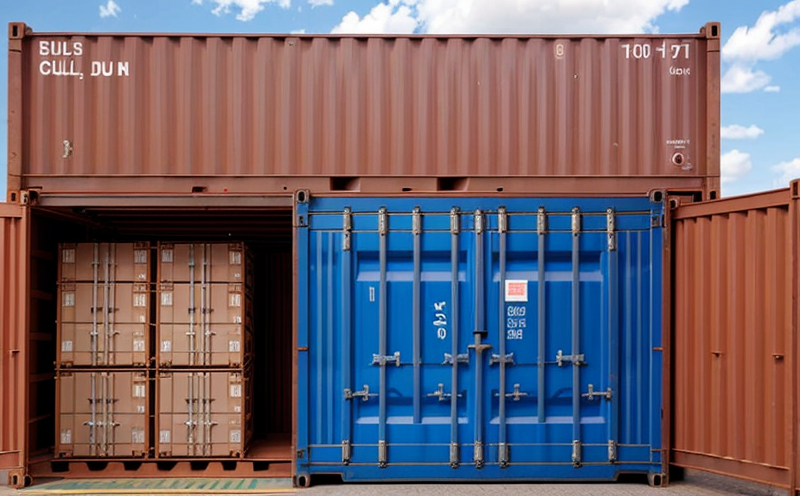USP Pull Off Force Testing of Caps
In the pharmaceutical industry, ensuring that packaging and container closure systems are designed to prevent contamination is critical. The United States Pharmacopeia (USP) Chapter 0854 sets stringent standards for container closure systems to ensure they are tamper evident and provide a barrier against contamination. One of the key tests in this context is USP Pull Off Force Testing, which assesses the force required to remove closures from containers.
This test evaluates the integrity of the cap-seal relationship by measuring the pull-off force needed to detach the cap from its container. This ensures that the closure remains secure during shipping and handling while allowing for easy opening when it reaches the consumer. The test is particularly important in ensuring compliance with USP guidelines, which are recognized worldwide as a standard for quality in pharmaceutical products.
The testing process involves several steps. First, the caps are prepared by cleaning them to ensure no debris or contaminants interfere with the measurement. The caps are then mounted on their respective containers, and the pull-off force is measured using specialized equipment. This equipment typically consists of a load cell connected to a mechanical arm that applies a controlled force perpendicular to the cap surface until it is removed.
The force required for removal is recorded, and this value is compared against USP standards. If the force falls within the accepted range, indicating an appropriate balance between security and ease of opening, then the closure system passes the test. For example, a force that is too low may indicate poor tamper-evident properties, while a force that is too high could make the container difficult to open.
For pharmaceutical packaging, the USP specifications for pull-off force testing are critical because they ensure both product integrity and patient safety. In addition, compliance with these standards can help manufacturers meet regulatory requirements and build consumer trust in their products.
The importance of this test cannot be overstated. It is a crucial step in ensuring that packaging meets the highest standards of quality and performance required by USP guidelines. This ensures that pharmaceutical products are safe for patients and that they have confidence in the integrity of the packaging provided.
Why Choose This Test
Selecting USP Pull Off Force Testing as part of your quality assurance process offers several advantages:
- Compliance with USP Standards: Ensuring that your packaging meets the stringent requirements set by USP can help you avoid costly recalls and legal issues.
- Patient Safety: By verifying that caps provide an adequate seal, you minimize the risk of contamination and ensure product integrity.
- Consumer Trust: Demonstrating commitment to quality through compliance with recognized standards enhances consumer confidence in your products.
- Regulatory Compliance: Meeting USP requirements can help streamline the approval process for new products, reducing time-to-market.
The test is particularly valuable because it addresses both the security and ease of use aspects of container closure systems. This balance is crucial in pharmaceutical packaging, where tamper evidence must be maintained while ensuring that containers are easy to open.
Customer Impact and Satisfaction
The results of USP Pull Off Force Testing have a direct impact on customer satisfaction and trust. When testing demonstrates compliance with USP standards, it reassures customers about the quality and safety of their products. This can lead to increased sales and loyalty. Moreover, meeting these stringent requirements can also contribute positively to your brand’s reputation in the marketplace.
In addition to enhancing consumer confidence, passing this test can also reduce the risk of product recalls, which are not only costly but also damaging to a company's reputation. By ensuring that caps meet the appropriate pull-off force specifications, you minimize the chances of containers being compromised during transit or handling.
| Compliance with USP Standards | Patient Safety and Product Integrity | Consumer Trust | Regulatory Compliance |
|---|---|---|---|
Ensures that caps are tamper evident. |
Maintains product integrity during transit. |
Enhances consumer confidence in the brand and products. |
Facilitates smoother regulatory processes. |
Avoids potential legal issues related to non-compliance. |
Reduces risk of product contamination. |
Builds a positive brand image. |
Streamlines the approval process for new products. |
In summary, USP Pull Off Force Testing is more than just a compliance requirement; it's an essential step in delivering safe and reliable pharmaceutical products that meet the expectations of both regulatory bodies and consumers.
Use Cases and Application Examples
- Generic Drug Manufacturers: Ensuring that their packaging meets USP standards is crucial for maintaining product integrity and patient safety.
- Biopharmaceutical Companies: Compliance with these tests can help streamline the approval process, leading to faster market entry.
- Cosmetics and Personal Care Products: While not pharmaceuticals per se, the principles of ensuring secure yet easy-to-open packaging are equally important for maintaining product quality.
| Product Type | Use Case |
|---|---|
Generic Drug Packaging |
To ensure that the caps provide an adequate seal, preventing contamination during transit. |
Biopharmaceutical Containers |
To meet regulatory requirements and streamline the approval process for new products. |
Cosmetics Packaging |
To maintain product integrity while ensuring easy access to the product. |
These examples illustrate how USP Pull Off Force Testing is applicable across various sectors within the pharmaceutical industry. The test ensures that packaging meets critical standards for both security and ease of use, thereby enhancing overall quality assurance.





